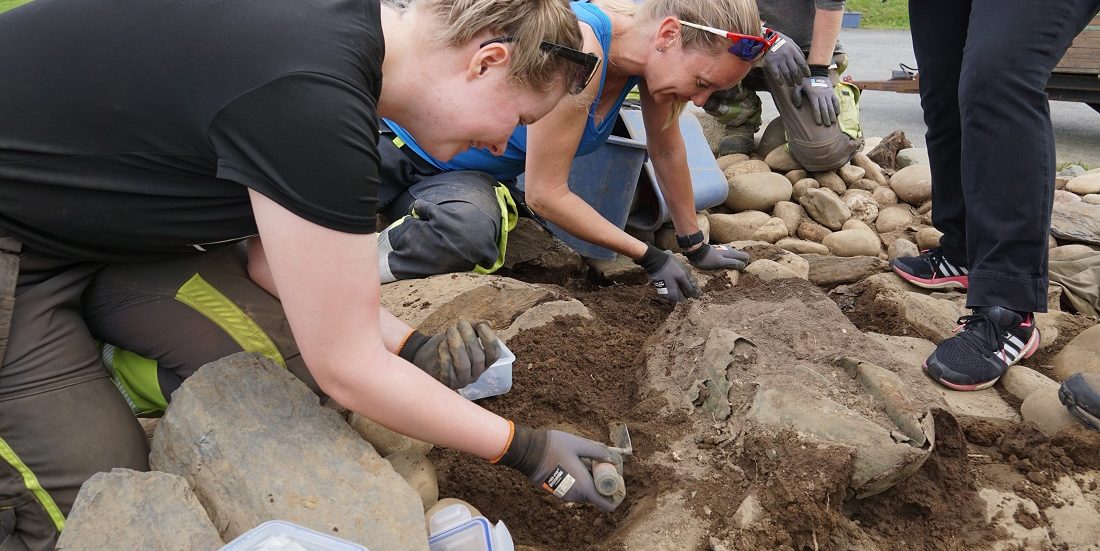The cauldron has been uncovered, and Heidi Fløttum Westgaard, Ellen Grav Ellingsen
and Kjell André Brevik carefully clean it off.
Photo: Astrid Kviseth / NTNU University Museum
“Vessels like these were imported from the Roman Empire and confirm that this was an area of status and wealth during Roman times,” says archaeologist Merete Moe Henriksen.
Sometime around 150-300 CE a person died at the place now called Gylland in the Gaula River valley, in southern Trøndelag county. After the body was cremated, the remains were laid in a bronze vessel. This was then covered or wrapped in birch bark before being buried under several hundred kilos of stone.
And there it stayed – until this summer, when archaeologists from the NTNU University Museum lifted a stone slab and almost lost their breath from excitement when they saw what lay below it.
“We’d gone over the spot with the metal detector, and so we knew that there was something under one of the stone slabs in the burial cairn,” says archaeologist Ellen Grav Ellingsen, who filmed the discovery with her mobile phone when the rock was lifted away.

No comments:
Post a Comment
Note: Only a member of this blog may post a comment.